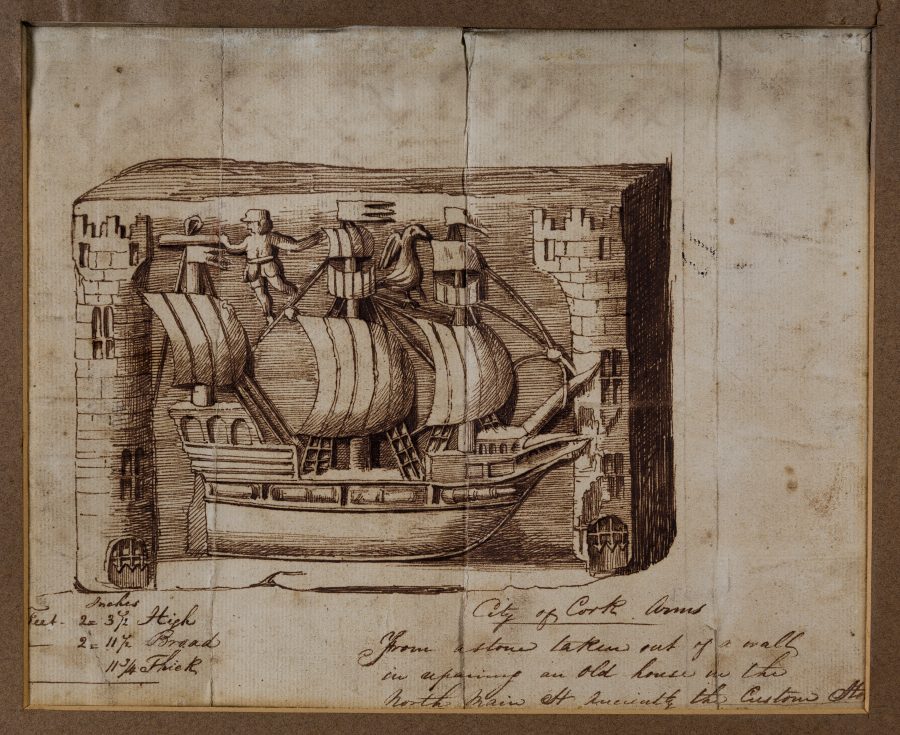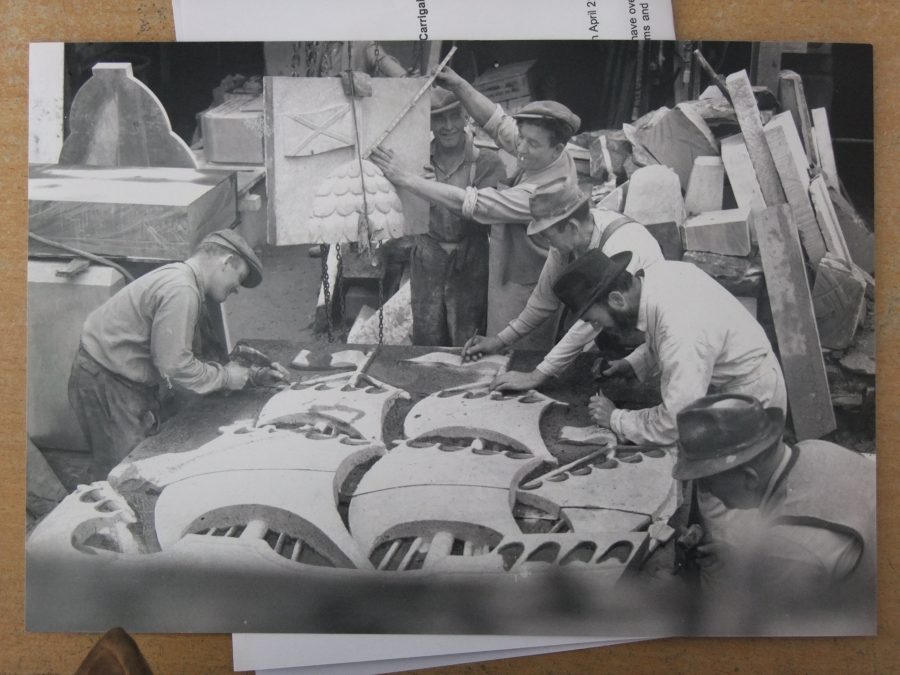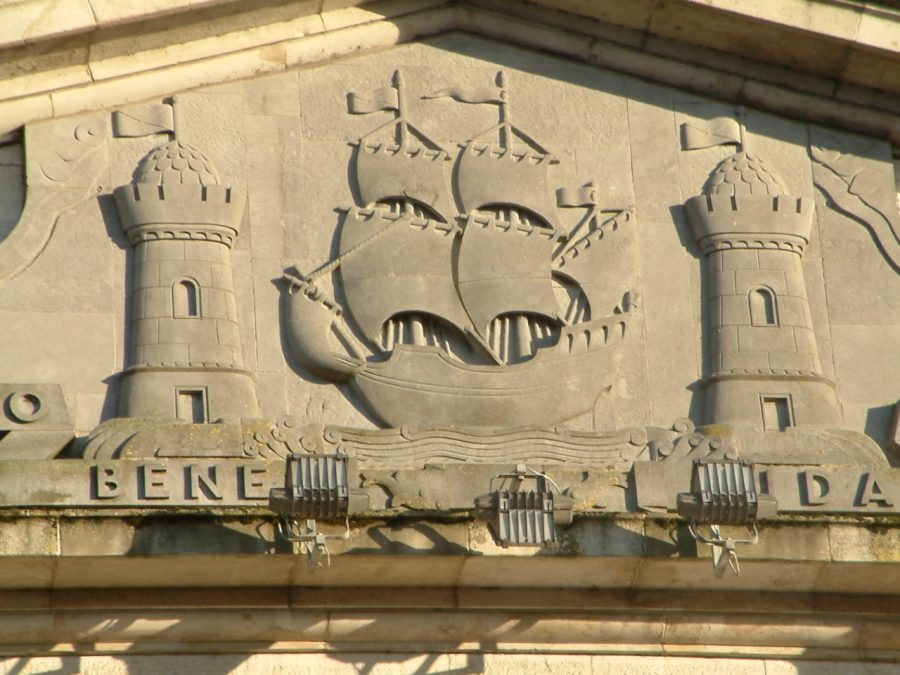
Always creative and always beautiful is one way to sum up the various Cork Coat of Arms creations – from etchings on old maps to the Lord Mayor’s chain to appearing on City Hall flag motifs, to Waterworks, to the Port of Cork boardroom, to the City Library, Fire Engines to Cork GAA jerseys. It is unknown when the Coat of arms was first used. There were a number of earlier versions.
Richard Sainthill refers in An Olla Podrida, Vol. 2, to the Cork city seal attached to a document, dated 15 October 1498. On one side of the seal were the three Lions of England only, which evidenced that it had been engraved previous to the reign of Edward the Third, when the fleurs de lis were added. On the other side of the seal is a castle with two towers; a man in one with a bow, and in the other a man in a pleading attitude, blowing a trumpet. A bridge connects the two towers, beyond which a ship is seen. It may be of interest that the, Bristol Coat of Arms shows a ship beside a castle with two towers and a flag flying from each tower.
An arms with two towers and ship appears on the side of Munster Plantation President George Carew’s 1601 map of Cork. It is reputed that the towers are a reference to Watergate, which comprised a large portcullis gate that opened to allow ships into a small, unnamed quay located within the walled town. On either side of this gate, two large mural towers, known as King’s Castle and Queen’s Castle, controlled its mechanics. Little evidence remains of the gate, but on the basis that it had to allow access by ships with full masts, Watergate possibly divided in two and opened like a door, rather than being wound up and down by means of a stout chain on a pulley system.
In 1996, when new sewage pipes were being laid on Castle Street, archaeologists found two portions of rubble that indicated the site of the rectangular foundations of Queen’s Castle. A further section was discovered in 1997. During these excavations, sections of the medieval quay wall were also recovered on Castle Street.
A new Mayor’s gold chain was placed on the shoulders of Mayor of Cork Samuel Rowland in 1787. It was voted on by the court of D’Oyer Hundred – or the city’s assembly of freemen. The sum of £500 was given as a bond by the then Mayor who needed to be paid back, and the money sent onto the London goldsmith. The highlighted medallion has the coat of arms and the Latin inscription Statio Bene Fida Carinis, which means a safe harbour for ships. The inscription is a corruption from the second book of the Aeneid, line 23, with ‘bene’ substituted for Virgil’s ‘male’.

The Arms of Cork City were officially registered by the Chief Herald on 23rd August 1949 and are described as follows:
“Órdha ar thonntracha mara long trí-chrann fá lántseol dualdaite idir dhá thúr dhearg ar charraigeacha dualdaite ar gach túr bratach airgid maisithe le sailtír dheirg” Leis an Rosc “Statio Bene Fide Carinis.”
“Or, on waves of the sea a ship three masts in full sail proper between two towers gules upon rocks also proper each tower surmounted by a flag argent charged with a saltire of the third” with the Motto “Statio Bene Fida Carinis”.
Nine years later after the official registration in 1957, one of the most striking pieces were created above the entrance to the Cork Harbour Commissioners. The Cork Harbour Board, with a certain amount of ceremony, inaugurated a new symbol in front of their offices to take the place of an old one which was supposed to be a relic of British domination, usually described as the Royal coat of arms.
On 8 April 1957, Alderman Sean Casey, TD, Lord Mayor of Cork, unveiled the Cork Coat of Arms over the entrance to the office of the Cork Harbour Board at Custom House Quay. In Kilkenny limestone, the heraldic design depicts the ancient arms of the city. in the speeches tribute was made to Mr Marshal Hutson, the Cork sculptor, who designed the Coat of Arms, and to Messrs. Thomas McCarthy and Sons, Copley Street, Cork, monumental sculptors, who executed the work. Its erection marks the conclusion of a total reconstruction of the South Jetties, and the completion of the first two stages of the long river wall on the northern side.


Read more and Explore more: 3a. Cork in the Sixteenth Century | Cork Heritage
